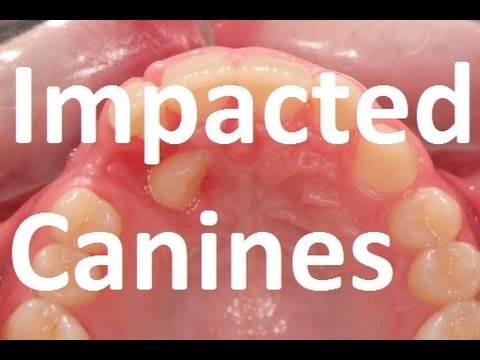 The teeth are an essential part of a person’s body since they help assist with speech, chewing and even breathing. However, all teeth aren’t the same. Humans possess various types of teeth in their mouths, and each type has a technical term that describes it. One of the essential teeth found in the mouth is the cuspid.
The teeth are an essential part of a person’s body since they help assist with speech, chewing and even breathing. However, all teeth aren’t the same. Humans possess various types of teeth in their mouths, and each type has a technical term that describes it. One of the essential teeth found in the mouth is the cuspid.
What Is A Cuspid?
One of the most essential types of teeth found in the mouth is the cuspid. Each individual has four cuspids, two on either side of the mouth. These teeth are the ones that are pointed and are oftentimes referred to as canine teeth, eye teeth or even vampire teeth. They are fang-like in appearance, and they play a crucial role in biting, chewing and speaking. They can be found on both the upper and lower jaws between the incisor teeth, which are the flat front teeth on the top of your mouth in the center and the small chewing teeth located in the center of the bottom of your mouth. Perhaps one of the easiest ways to locate the cuspid teeth is to count three spaces from the center of the smile. The cuspid tooth is the third one from the center on all sides. These teeth are among the last ones to erupt, so most people don’t get their permanent cuspid teeth until they are between 11 and 12 years of age. These teeth help keep the other teeth in position as they continue to grow.
Potential Problems with a Cuspid
Problems with the cuspids can result in a variety of dental issues. Cuspids are essential in the spacing of the teeth, and they are among the strongest teeth in the mouth since they are used for biting and tearing food. Any complication in the development of the cuspids could have serious dental impacts on the overall development of the teeth. The most common problem people experience with cuspids are when they become impacted. Impacted cuspids are simply ones that don’t come down from the palate. The cases of impacted cuspids can be many, but some of the most common causes include cuspids that are simply slow to come in, might be fused to the bone or may have gum tissue that is too high over them.
Treatment for Problems with a Cuspid
 Fortunately, there are treatment options for impacted cuspids. When cuspids are impacted, dentists will usually try to bring the cuspid in through a variety of treatment options. The goal of bringing cuspids in is to coax the cuspids into breaking through the palate and aligning themselves in their proper positions so that they can support the other teeth and keep them coming in properly as well.
Fortunately, there are treatment options for impacted cuspids. When cuspids are impacted, dentists will usually try to bring the cuspid in through a variety of treatment options. The goal of bringing cuspids in is to coax the cuspids into breaking through the palate and aligning themselves in their proper positions so that they can support the other teeth and keep them coming in properly as well.
The most common treatment option for impacted cuspids is to affix dental braces to the teeth to open up sufficient space for the cuspids to emerge. Once a space is opened up for the cuspids and while the braces are still on, the patient is sent to an oral surgeon who then attaches a button with a chain on it to the cuspid tooth. As the braces continue to be adjusted, the chain is tightened as well to attempt to cause the cuspid to break through and to bring it down into proper alignment. The amount of time that it takes this process to occur varies depending upon how severely impacted the patient’s cuspid is.
In some cases, patients might need to have some of their neighboring teeth removed in order for the cuspids to come through, and in some more extreme cases in which the nerve endings in the cuspids have died, the cuspids will have to be removed entirely. In the event that the cuspid will need to be extracted, most dentists will further evaluate their patients cases and then make a recommendation on a treatment plan to shift their other teeth to fill the void.
References:
Pennsylvania Society of Oral & Maxillofacial Surgeons. “Impacted Canines.” Retrieved on May 16, 2016, from http://www.psomsweb.org/impacted-canines.aspx.
The Journal of the American Dental Association. “The Impacted Cuspid.” Retrieved on May 16, 2016, from http://jada.ada.org/article/S1048-6364(33)03007-1/abstract.
Pennsylvania Society of Oral & Maxillofacial Surgeons
P.O. Box 500
Harrisburg, PA 17108-0500
877-776-6778
www.psomsweb.org
The Journal of the American Dental Association
211 East Chicago Ave.
Chicago, IL 60611-2678
312-440-2500
jada.ada.org
Images:
http://mariannaklimek.com/wp-content/uploads/17.jpg
https://i.ytimg.com/vi/RLr4zv41eD4/hqdefault.jpg